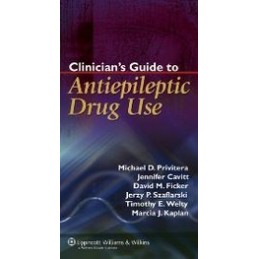- Obniżka


 Dostawa
Dostawa
Wybierz Paczkomat Inpost, Orlen Paczkę, DHL, DPD, Pocztę, email (dla ebooków). Kliknij po więcej
 Płatność
Płatność
Zapłać szybkim przelewem, kartą płatniczą lub za pobraniem. Kliknij po więcej szczegółów
 Zwroty
Zwroty
Jeżeli jesteś konsumentem możesz zwrócić towar w ciągu 14 dni*. Kliknij po więcej szczegółów
Designed for quick point-of-care reference, this handbook offers evidence-based guidelines on use of antiepileptic drugs for seizures, psychiatric disorders, pain, and headache. Chapters cover all drugs, including the recently approved drug pregabalin. For each drug, the authors list FDA-approved indications and summarize the evidence for efficacy and tolerability from clinical trials for epileptic, psychiatric, pain, and headache indications. Also included are recommendations from professional societies such as the American Academy of Neurology, American Psychiatric Association, and Association for the Study of Headache. Tables in the final chapter summarize these recommendations and indicate the authors choice of drug in various clinical situations.
Opis
Introduction
Michael D. Privitera
Carbamazepine
Timothy E. Welty
Felbamate
Michael D. Privitera
Gabapentin, Neurontin
Jennifer Cavitt
Lamotrigine
David M. Ficker
Levetiracetam
Jennifer Cavitt
Oxcarbazepine
Jerzy P. Szaflarski
Phenobarbital, Primidone (Mysoline)
Timothy E. Welty
Phenytoin
Michael D. Privitera
Pregabalin
Timothy E. Welty
Tiagabine
Jennifer Cavitt
Topiramate
Michael D. Privitera
Valproate
David M. Ficker
Zonisamide
Jerzy P. Szaflarski
Summary Tables
Michael D. Privitera
